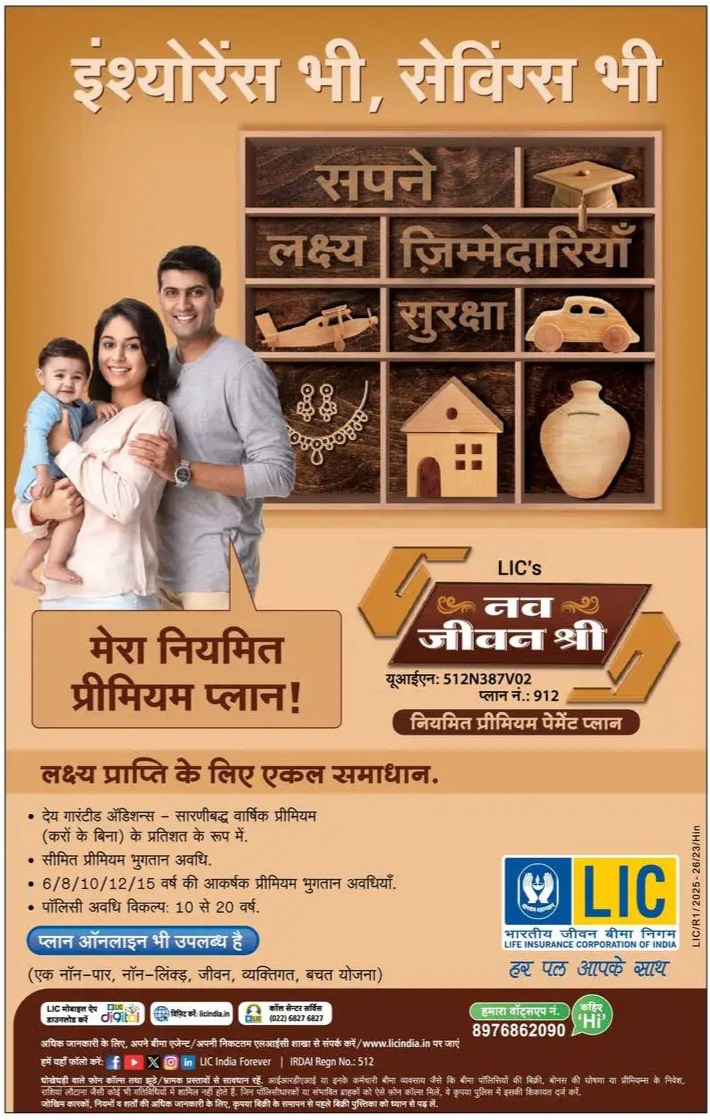भारत के गणतंत्र की यात्रा
भारत के गणतंत्र की यात्रा
65 वर्ष पहले 21 तोपों की सलामी के बाद भारतीय राष्ट्री य ध्वज को डॉ. राजेन्द्रर प्रसाद ने फहरा कर 26 जनवरी 1950 को भारतीय गणतंत्र के ऐतिहासिक जन्म की घोषणा की।
एक ब्रिटिश उप निवेश से एक सम्प्रिभुतापूर्ण, धर्मनिरपेक्ष और लोकतांत्रिक राष्ट्रे के रूप में भारत का निर्माण एक ऐतिहासिक घटना रही। यह लगभग 2 दशक पुरानी यात्रा थी जो 1930 में एक सपने के रूप में संकल्पित की गई और 1950 में इसे साकार किया गया। भारतीय गणतंत्र की इस यात्रा पर एक नजर डालने से हमारे आयोजन और भी अधिक सार्थक हो जाते हैं।
भारतीय राष्ट्रीलय कांग्रेस का लाहौर सत्र
गणतंत्र राष्ट्री के बीज 31 दिसंबर 1929 की मध्य रात्रि में भारतीय राष्ट्री य कांग्रेस के लाहौर सत्र में बोए गए थे। यह सत्र पंडित जवाहर लाल नेहरु की अध्यजक्षता में आयोजित किया गया था। उस बैठक में उपस्थित लोगों ने 26 जनवरी को “स्वपतंत्रता दिवस” के रूप में अंकित करने की शपथ ली थी ताकि ब्रिटिश राज से पूर्ण स्वंतंत्रता के सपने को साकार किया जा सके। लाहौर सत्र में नागरिक अवज्ञा आंदोलन का मार्ग प्रशस्त किया गया। यह निर्णय लिया गया कि 26 जनवरी 1930 को पूर्ण स्व्राज दिवस के रूप में मनाया जाएगा। पूरे भारत से अनेक भारतीय राजनैतिक दलों और भारतीय क्रांतिकारियों ने सम्मारन और गर्व सहित इस दिन को मनाने के प्रति एकता दर्शाई।
भारतीय संविधान सभा की बैठकें
भारतीय संविधान सभा की पहली बैठक 9 दिसंबर 1946 को की गई, जिसका गठन भारतीय नेताओं और ब्रिटिश कैबिनेट मिशन के बीच हुई बातचीत के परिणाम स्व।रूप किया गया था। इस सभा का उद्देश्य भारत को एक संविधान प्रदान करना था जो दीर्घ अवधि प्रयोजन पूरे करेगा और इसलिए प्रस्तामवित संविधान के विभिन्न पक्षों पर गहराई से अनुसंधान करने के लिए अनेक समितियों की नियुक्ति की गई। सिफारिशों पर चर्चा, वादविवाद किया गया और भारतीय संविधान पर अंतिम रूप देने से पहले कई बार संशोधित किया गया तथा 3 वर्ष बाद 26 नवंबर 1949 को आधिकारिक रूप से अपनाया गया।
संविधान प्रभावी हुआ
जबकि भारत 15 अगस्त 1947 को एक स्व्तंत्र राष्ट्रि बना, इसने स्वातंत्रता की सच्चीा भावना का आनन्द 26 जनवरी 1950 को उठाया जब भारतीय संविधान प्रभावी हुआ। इस संविधान से भारत के नागरिकों को अपनी सरकार चुनकर स्वियं अपना शासन चलाने का अधिकार मिला। डॉ. राजेन्द्रय प्रसाद ने गवर्नमेंट हाउस के दरबार हाल में भारत के प्रथम राष्ट्रंपति के रूप में शपथ ली और इसके बाद राष्ट्रंपति का काफिला 5 मील की दूरी पर स्थित इर्विन स्टे डियम पहुंचा जहां उन्होंंने राष्ट्री य ध्वज फहराया।
तब से ही इस ऐतिहासिक दिवस, 26 जनवरी को पूरे देश में एक त्यौरहार की तरह और राष्ट्री य भावना के साथ मनाया जाता है। इस दिन का अपना अलग महत्व है जब भारतीय संविधान को अपनाया गया था। इस गणतंत्र दिवस पर महान भारतीय संविधान को पढ़कर देखें जो उदार लोकतंत्र का परिचायक है, जो इसके भण्डा्र में निहित है। आइए अब गर्व पूर्वक इसे जानें कि हमारे संविधान का आमुख (बाहरी वेबसाइट जो एक नई विंडों में खुलती हैं)क्या कहता है।
क्याध आप जानते हैं?
395 अनुच्छेआदों और 8 अनुसूचियों के साथ भारतीय संविधान दुनिया में सबसे बड़ा लिखित संविधान है।
उद्धृत

डॉ. राजेन्द्रई प्रसाद, स्वततंत्र भारत के प्रथम राष्ट्रहपति ने भारतीय गणतंत्र के जन्म के अवसर पर देश के नागरिकों का अपने विशेष संदेश में कहा:
“हमें स्वेयं को आज के दिन एक शांतिपूर्ण किंतु एक ऐसे सपने को साकार करने के प्रति पुन: समर्पित करना चाहिए, जिसने हमारे राष्ट्रय पिता और स्वततंत्रता संग्राम के अनेक नेताओं और सैनिकों को अपने देश में एक वर्गहीन, सहकारी, मुक्त और प्रसन्नतचित्त समाज की स्थाअपना के सपने को साकार करने की प्रेरणा दी। हमें इसे दिन यह याद रखना चाहिए कि आज का दिन आनन्द मनाने की तुलना में समर्पण का दिन है – श्रमिकों और कामगारों परिश्रमियों और विचारकों को पूरी तरह से स्वरतंत्र, प्रसन्न और सांस्कृोतिक बनाने के भव्य कार्य के प्रति समर्पण करने का दिन है।”

सी. राजगोपालाचारी, महामहिम, महाराज्यपपाल ने 26 जनवरी 1950 को ऑल इंडिया रेडियो के दिल्लीं स्टेेशन से प्रसारित एक वार्ता में कहा:
“अपने कार्यालय में जाने की संध्यां पर गणतंत्र के उदघाटन के साथ मैं भारत के पुरुषों और महिलाओं को अपनी शुभकामनाएं और बधाई देता हूं जो अब से एक गणतंत्र के नागरिक है। मैं समाज के सभी वर्गों से मुझ पर बरसाए गए इस स्ने ह के लिए हार्दिक धन्यगवाद देता हूं, जिससे मुझे कार्यालय में अपने कर्त्तव्योंे और परम्पमराओं का निर्वाह करने की क्षमता मिली है, अन्ययथा मैं इससे सर्वथा अपरिचित था।”
Journey of Indian Republic
63 years back, a salute of 21 guns and the unfurling of the Indian National flag by Dr. Rajendra Prasad heralded the historic birth of the Indian Republic on January 26, 1950; 894 days after our country became a dominion following withdrawal of British Rule. Since then, every year the day is celebrated with great pride and happiness all over the nation.
The transition of India from a British colony to a sovereign, secular, and democratic nation was indeed historical. It was a long journey of around two decades that started with the conceptualisation of the dream in 1930 to its actual realization in 1950. A look into the journey that led to the birth of Indian Republic will make our celebrations more meaningful.
Lahore Session of the Indian National Congress
The seeds of a republican nation were sowed at the Lahore session of the Indian National Congress at the midnight of 31st December 1929. The session was held under the presidency of Pt. Jawarhar Lal Nehru. Those present in the meeting took a pledge to mark January 26 as “Independence Day” in order to march towards realizing the dream of complete independence from the British. The Lahore Session paved way to the Civil Disobedience movement. It was decided that January 26, 1930 would be observed as the Purna Swaraj (complete Independence) Day. Many Indian political parties and Indian revolutionaries from all over the country united to observe the day with honour and pride.
Indian Constituent Assembly Meetings
The Indian Constituent Assembly, which was constituted as a result of the negotiations between the Indian leaders and members of the British Cabinet Mission, had its first meeting on December 9, 1946. The Objective of the Assembly was to give India a constitution, which would serve a lasting purpose and hence appointed a number of committees to thoroughly research the various aspects of the proposed constitution. The recommendations were discussed, debated and revised many times before the Indian Constitution was finalized and officially adopted three years later on November 26, 1949.
Constitution came into force
Though India became a free nation on August 15, 1947, it enjoyed the true spirit of Independence on January 26, 1950 when the Constitution of India finally came into force. The Constitution gave the citizens of India the power to govern themselves by choosing their own government. Dr. Rajendra Prasad, took oath as the first President of India at the Durbar Hall in the Government House and this was followed by the Presidential drive along a five-mile route to the Irwin Stadium, where he unfurled the National Flag.
Ever since the historic day, January 26 is celebrated with festivities and patriotic fervor all around the country. The day owes its importance to the constitution of India that was adopted on this day. On this Republic Day, read what the great Constitution of India, that propounds liberal democracy, has in its store. Let’s also feel proud in pronouncing what the Preamble to our Constitution(External website that opens in a new window) says.
Did you know?
With 395 Articles and eight Schedules, the Indian Constitution is the largest written constitution in the world.
Quotes
Dr. Rajendra Prasad, the first President of Independent India, in his special message to his countrymen, on the birth of the Indian Republic, said:
“We must re-dedicate ourselves on this day to the peaceful but sure realization of the dream that had inspired the Father of our Nation and the other captains and soldiers of our freedom struggle, the dream of establishing a classless, co-operative, free and happy society in ‘his country’. We must remember that this is more a day of dedications than of rejoicing – dedication to the glorious task of making the peasants and workers the toilers and the thinkers fully free, happy and cultured.”
C. Rajagopalachari, His Excellency the Governor-General in a broadcast talk from the Delhi Station of All-India Radio on Jan 26, 1950 said:
“On the eve of my laying down office, with the inauguration of the Republic, I should like to tender my greetings and best wishes to the men and women of India who will henceforth be a citizen of a republic. I feel deeply thankful for the affection showered on me by all sections of the people, which alone enabled me to bear the burden of an office to the duties and conventions of which I had been an utter stranger.”















 +91-94068 22273
+91-94068 22273 
